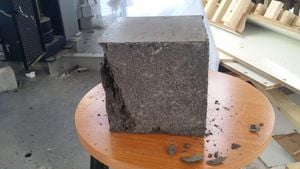A novel method combining camera and accelerometer technology to accurately measure the restoring force characteristics of detached wooden houses has been developed, aiming to improve structural health monitoring and prepare for potential earthquake damage.
Earthquakes pose a serious threat to lives and property, particularly for wooden houses more susceptible to structural failure. According to recent research, the conventional approaches for assessing the structural integrity of these buildings require complex setups and may lead to significant measurement errors. This has spurred interest in innovative methods to monitor buildings more effectively.
The study, published by S. Muramatsu, K. Tamura, M. Yamamoto, and colleagues, introduces a technique utilizing the fusion of camera and accelerometer data. The aim is to provide accurate assessments of the restoring force characteristics—vital for determining whether buildings will withstand seismic events.
Traditional monitoring techniques often rely on multiple accelerometers, which require precise synchronization to avoid integration errors. The novel method instead employs camera imaging to measure interstory drift—the relative displacement between floors during seismic activity—alongside accelerometer data to calculate response acceleration.
One of the key advantages of this new method is its ability to directly measure displacement through the camera. This removes the need for double integration of acceleration, greatly reducing potential errors. The study demonstrated this approach under controlled conditions using scaled models and various sampling rates, proving its robustness and effectiveness.
The experimental results indicated measurement errors for restoring force characteristics could reach as low as 1% when proper techniques were applied. This precision holds great promise for real-world applications; tests on full-scale timber-framed houses proved equally successful.
The research reveals significant potential for widespread adoption of this technology among homeowners, particularly those living in earthquake-prone regions. Structural health monitoring can be simplified through the deployment of compact devices, which combine both sensor technologies. These easy-to-install modules could provide real-time assessments of building integrity and aid decisively during emergencies.
"This method can quickly diagnose earthquake damage... correctly determine whether evacuation is necessary, and reduce secondary damage from aftershocks," said the authors, underscoring the practical applications of their innovations.
The methodology was validated through extensive shake table experiments, demonstrating how it could operate effectively during actual seismic events. With the camera and accelerometer setup, the researchers established the ability to measure both response acceleration and interstory drift, facilitating the determination of restoring-force characteristics.
Notably, the results indicated the newly proposed method could serve as an efficient tool for structural engineers and disaster response teams alike. This offers opportunities for enhancing public safety, allowing immediate assessments of homes following tremors.
Moving forward, the authors believe future studies will refine this approach for various practical environments and explore supplemental sensors to bolster its efficacy even more. They hope to see technology integrated broadly to empower communities against the continual threat of seismic disasters.
With the pressing need for reliable monitoring systems to safeguard vulnerable structures, the introduction of camera-accelerometer fusion technology marks a meaningful advancement for earthquake preparedness and response.



